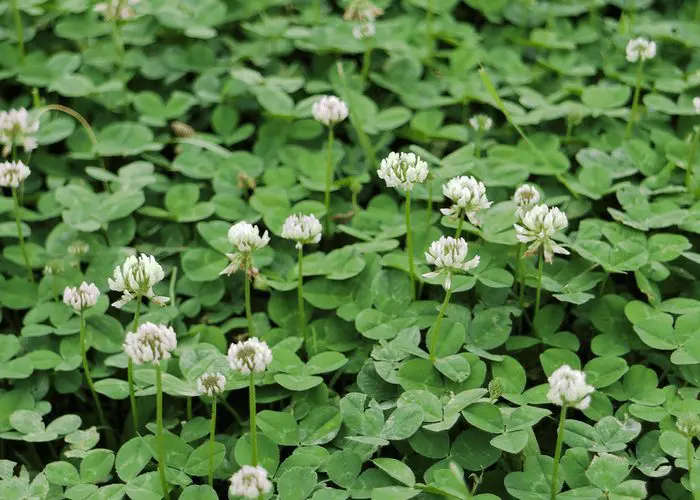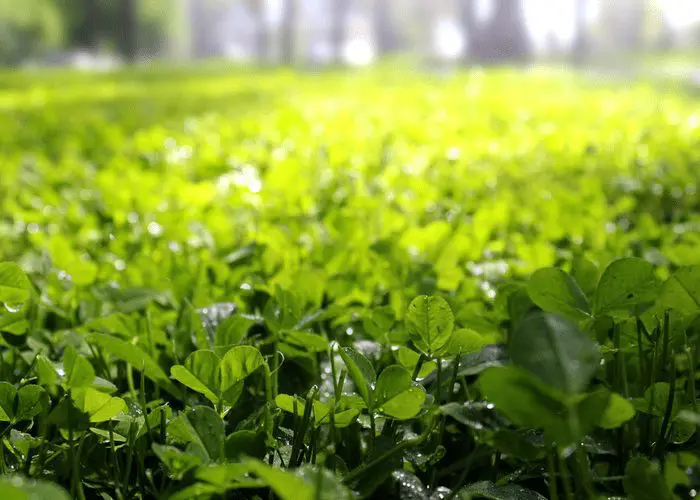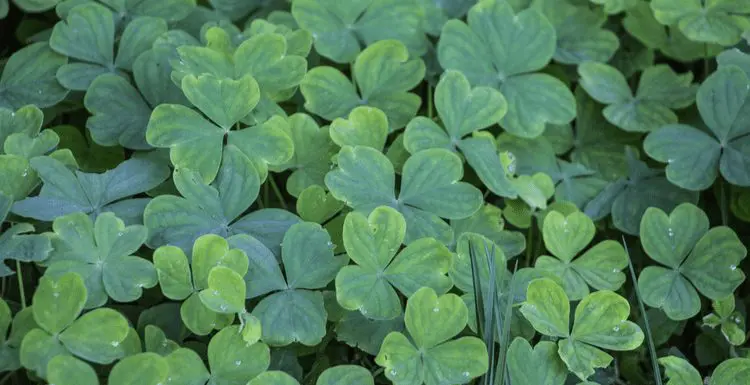Have you ever wondered how to kill clover without damaging your lawn?
This is something almost every homeowner deals with during the spring and summer months. Read on to learn all you need to know.
Have a Clover Problem?
As the weather begins to warm up in spring and summer, your garden and lawn will begin to grow. Unfortunately, along with your yard, other common weeds, such as dandelions or clovers, will likely begin to sprout.
Before you realize it, the entire lawn is a blend of blades of grass and clovers, and at that point, there’s not much you can do. So the key is to prevent the problem before it spreads.
Killing clover can be difficult because it is a stolon plant, which means it forms an intense and thorough network of roots under the dirt. And because they are so small and grow in large clumps, it’s hard to manually rip out every single root.
The good news is that if you address your clover problem at the first sign of growth, it’s much more manageable throughout the year. But first, what exactly is clover?
Recognizing Clover

Topimages/Shutterstock
There are over 50 different types of clovers, with a minimum of 300 recognized species. The most common type of clover that tends to cover people’s lawns is the white clover.
These are the small clovers that have three leaves and small white bushy flowers. There is also a perennial clover and an annual clover, and they can grow with three, four, and even five leaves, depending on the species.
Four-leaf clovers are also known to bring good luck and fortune, as it is extremely rare to find one. For aesthetic purposes and to protect your garden from pests, you need these clover weeds gone.
Simply mowing over them will solve the problem in the short term, but they’ll return within a week. Read on to learn how to permanently get rid of clover.
How to Get Rid of Clover
The following are a few good ways to permanently remove clover from your property and achieve a healthy lawn.
Change Your Fertilizer
One of the simplest ways to permanently eliminate clover is by changing the type of fertilizer you use on your lawn. Clovers often appear because the grass is lacking nitrogen, and clovers produce a lot of nitrogen.
Switch to a nitrogen-rich fertilizer, and there will be no reason for the clovers to grow on your lawn. If you’re looking for a quicker method to kill and eradicate the weed, you can use a quick-release fertilizer.
Follow the instructions on the label to learn how often you should be respraying your clover infestation. The best fertilizer to kill clovers is a nitrogen-rich fertilizer or a weed and feed formula. Both of these can be found at any hardware store.
Use a Herbicide
Another method of killing clover is by using an herbicide. There are several different kinds and brands of herbicides, so you will need to do your research before choosing this method.
Many herbicides are non-selective, which means they’ll kill your other plants. So it’s best to talk to an herbicide expert before purchasing any products.
It is also important to keep in mind that herbicides often do not kill the root system, so they offer a temporary fix; the clovers are likely to come back the following spring.
Ammonia
You can also try using ammonia to kill clover; it will burn the weed. You want to make sure you pour the ammonia on the grass when it is soaking wet. For example, after it rains.
You can also wet the lawn with a garden hose before applying the ammonia to the clovers. Make sure to only pour the ammonia directly onto the clover growth, or else you risk severely damaging your lawn.
Also, we recommend only using this method if you have previous experience with ammonia. It’s a powerful chemical that goes a long way.
Natural Methods
Finally, there are a few natural methods we would recommend trying out. Does vinegar kill clovers? Yes. You can create a mixture of vinegar and dish soap in a spray bottle and spritz it over the clovers.
You can also use corn gluten. This is a natural herbicide that’s not as bad for the environment.
Drizzle the corn gluten over the clover infestation and allow about 2 to 3 days for the herbicide to work. You can re-apply the corn gluten meal after 4 to 6 weeks if the clover is not dead.
Frequently Asked Questions

Alex SG/Shutterstock
When should clover be killed?
The best time to kill the clover infestation you have in the yard is in the Spring when you notice them first beginning to sprout.
If you feel like your lawn could use the extra nitrogen that clovers bring and do not mind how it looks on your lawn, they don't necessarily need to be killed. They can prove to be beneficial.
How to kill clover without killing other plants?
To not harm your lawn and surrounding plants when you are trying to kill a clover weed, make sure to take your time with the product you end up using.
Spray an inch or two away from the clovers to ensure control over where the clove killer is being dispersed. We also don't recommend applying your product on a windy day, as it can accidentally blow into your garden or other parts of your lawn.

